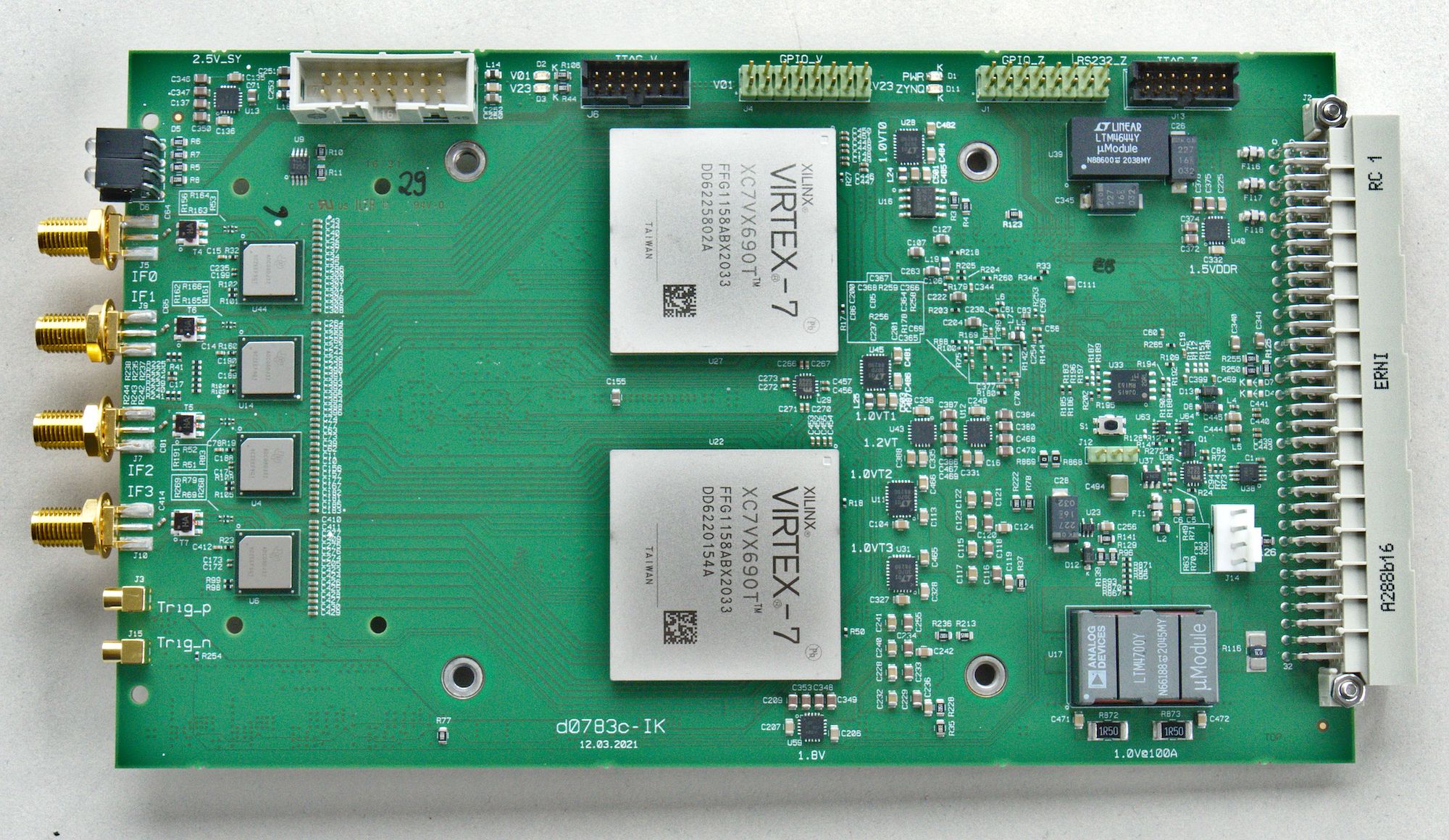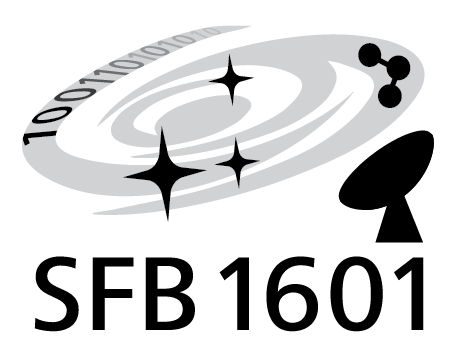Project leaders: Klein, Bernd (MPIfR)

In this subproject the ongoing technical developments in the field of Digital Signal Processing (DSP) will be used and applied to develop innovative instruments for use in radio astronomy. Already in the last funding period of the former CRC 956, Digital Signal Processing was established as a subproject to develop novel FFT spectrometers for large IF bandwidths with high frequency resolution for the CHAI receiver. Furthermore, new approaches in the field of laboratory spectroscopy were developed in the DSP subproject, which allow a considerable fast evaluation of experiments.
Building on these great successes, the new DSP subproject will exploit the technical advancements in the field of DSP hardware to intelligently process the rapidly increasing amounts of data from new instruments. For this purpose, methods of artificial intelligence (AI) and machine learning will be applied on the back-end level for the first time to process the signals of novel detectors (MKID/ C7) and SIS mixer concepts in the THz range (B7). To implement and evaluate the mentioned AI concepts, a novel general-purpose DSP hardware architecture is being developed that incorporates high-speed ADCs and DACs, highly complex FPGAs, and, for the first time, a GPU module. Ultra-fast PCIe-based interconnects between the FPGA and GPU will enable delay-free data exchange, which will become the basis for this heterogeneous AI signal processing hardware. This development will further improve laboratory spectroscopy (A4) and is in particular an integral part of the MKID development (C7) and the THz receiver project (B7).
References
- Durán, Güsten, Risacher, Görlitz, Klein, Reyes, Ricken, Wunsch, et al., “4GREAT — A Four-Color Receiver for High-Resolution Airborne Terahertz Spectroscopy”, IEEE Transactions on Terahertz Science and Technology 11, 194 (2021).
- Klein, Hochgürtel, Krämer, Bell, Meyer, and Güsten, “High-resolution wide-band fast Fourier transform spectrometers”, A&A 542, L3 (2012).
- Klein, Philipp, Krämer, Kasemann, Güsten, and Menten, “The APEX digital Fast Fourier Transform Spectrometer”, A&A 454, L29 (2006).
- Klein, Philipp, Güsten, Krämer, and Samtleben, “A new generation of spectrometers for radio astronomy: fast Fourier transform spectrometer”, 6275, edited by Zmuidzinas, Holland, Withington, and Duncan, 320 (2006).
- Risacher, Güsten, Stutzki, and 19 co-authors including, Graf, Honingh, Klein, and Simon, “The up-GREAT 1.9 THz multi-pixel high resolution spectrometer for the SOFIA Observatory”, A&A 595, A34 (2016).
- Risacher, Güsten, Stutzki, Hübers, Büchel, Graf, Heyminck, Honingh, et al., “First supra-thz heterodyne array receivers for astronomy with the sofia observatory”, IEEE Transactions on Terahertz Sci- ence and Technology 6, 199 (2016).
- Stanko, Klein, and Kerp, “A field programmable gate array spectrometer for radio astronomy. First light at the Effelsberg 100-m telescope”, A&A 436, 391 (2005).
- Wielebinski and Klein, “Radio astronomy and instrumentation”, Landolt-Börnstein – Group VI Astronomy and Astrophysics (2010).
- Yates, Baryshev, Baselmans, Klein, and Güsten, “Fast fourier transform spectrometer readout for large arrays of microwave kinetic inductance detectors”, Applied Physics Letters 95, 042504 (2009).
